Graham Reid | | 8 min read
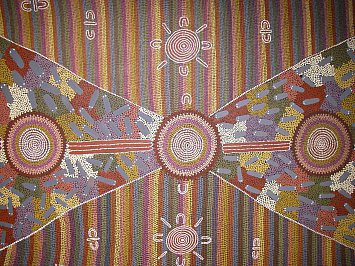
If only the moment could have been frozen in the lens. It resonated with meanings. The heavily bearded Aboriginal man -- unsteady on his feet and the cuffs of his worn jeans caked red with dust -- stands outside a gallery of Aboriginal art in Alice Springs.
Through glazed, yellowed eyes he stares silently into the air-conditioned room where conspicuously wealthy tourists assess the famous dot paintings of the Central Desert.
Aboriginal art, specifically the now-ubiquitous dot style which emerged from the tiny community of Papunya 230 km west of Alice Springs in the early 70s, is big business. Thirty years ago the Aboriginal art market was estimated at around $A2.5 million annually, recent figures suggest it is past $A400 million.
“But I don't know a lot of millionaire Aboriginal artists,” says Keith Munro, curator of the Aboriginal and Torres Strait Islander programme at Sydney's Museum of Contemporary Art.
Regrettably that's true: many Aboriginal artists live in deprived circumstances – even those at the top of the market – because of responsibilities to extended families in remote and destitute regions.
“In most communities there are no jobs,” says Chris Hodges, director of the Utopia Art Sydney who has had a 30 year relationship with Aboriginal artists and represents many through his gallery. “That's the only avenue to make a living. Yet in a big community not everyone is a painter, only a limited number take up the calling – but there are no other opportunities.”
Hodges notes artists will buy cars – Toyota trucks valued in the desert – for family members and support whole communities. Susan McCulloch in her 2001 book Contemporary Aboriginal Art estimated of the number of practicing artists at between 5000 and 7000 in a population of around 400,000.
“Not every Aboriginal is an artist,” says a dealer in Alice Springs where cafe tabletops and rubbish bins in the mall are covered in dots. “But they'll put a dot on you if you stand still long enough.”
In a region where work opportunities are limited if non-existent that is forgivable, and meeting a market conducted by unscrupulous dealers (“backyarders”) buying any painting cheap, then selling high to the undiscriminating.
Even the more monitored, professional and valuable marketplace is tainted by copyists and the quantity of inferior work.
Hodges mentions the successful 1988 New York exhibition of Papunya art the late Gabrielle Pizzi organised for the John Weber Gallery in New York: “A wonderful exhibition, the Brooklyn Museum bought a piece. But within 12 to 18 months half a dozen people had flown over, done second rate exhibitions and polluted the market. An opportunity started with good intentions and good work was ruined by opportunists.
“Every time I've been involved in an exhibition overseas, straight behind are people with a crappy exhibition, or with paintings under their arm.”
The Aboriginal art market is full of bad and misattributed paintings, copyists not putting their name on work and even reputable artists doing quick paintings for fast cash.
Any discussion of Aboriginal art and the market – “a minefield” is the most common description – seems to run on gossip, claim and counter-claim, innuendo and profiteering.
The artists and their work are at the interface of art and commerce, the conversation comes with accretions of culture, there has been a history of fakes and rip-offs, and the story of this popular and critically acclaimed field (which accounts for around 60 percent of Australian art sales) is inhabited by shady characters and fast-money merchants alongside the reputable and professional.
Yet the best work – and there is plenty of it – is exciting, powerful, unique and traverses the traditional and contemporary fields.
Hodges: “Some Aboriginal painters put the full force of their world into every picture and those works have a great visual beauty and power that sucks you in.
“I had an exhibition of [the late] Emily Ngwarray in Japan and more people attended that than the Warhol show.”
Some artists may command the international stage but can inhabit a quite separate world.
“John Mawurndjul is an example,” says artist and Coordinator of Aboriginal Programmes at the Art Gallery of New South Wales, Jonathan Jones. “To see him it's a six hour flight to Darwin, a two hour flight to Maningrida then a five hour drive to his outstation . . . if he's not out hunting.
“He doesn't speak English, but here's a man who has won every major accolade in Australia – but he goes into the bush, rips bark off a tree, digs rocks and makes his art.
“He fulfills every stereotype of an Aboriginal man, yet he's getting commissions around the world.”
Mawurndjul – who earns perhaps $A500,000 annually but also supports around 60 immediate and extended family members according to Benjamin Genocchio's Dollar Dreaming: Inside the Aboriginal Art World – would be in the top tier of the market. But Hodges says the money some Aboriginal artists command can be deceptive.
“One one level the prices are relatively low. The best for an Emily Ngwarray was $A1 million, but that was an exceptionally sized work.
“The average sale at auction would be $250,000, the millions are an aberration. A Rover Thomas may be about that, but Brett Whiteley, Arthur Boyd and all those [white] guys are regularly in the million dollar market.
“In some ways it is inflated, many young Aboriginal artists are quite expensive. But at the top, because of the pollution, it's not as consistent as it could be.”
From galleries in the side streets of Alice Springs to knock-offs sold on Circular Quay, there is considerable lousy if not fraudulent Aboriginal art.
Hodges: “There are plenty of Aboriginal paintings where the narrative is the only thing that saves it . . . but a lot of people pay a lot of money for bad white art too.”
Jones: “Just go through Paddington
and you'll see a lot of people are just painting stuff . . . and the
Aboriginal world isn't any different.”
However, regardless of
medium – bark, painting, sculpture made from traditional materials
– many Aboriginal artists are intelligent, contemporary
practitioners acutely aware of the context in which they work and
want to be located, says Jones.
“All these artists sitting in the
middle of nowhere are painting with the very clear purpose of
communicating, to talk about their cultural specificity and to create
a dialogue. They aren't stupid, they know only they will know the
absolute intricacies of what is in [their work] so they are putting
paintings out there to be enjoyed, loved, respected and seen.”
Jones
says many artists – he cites Clifford Possum – often write the
story to accompany their work, others such as Rover Thomas “are
just painting fields of colour, have no story and are calling them
'Untitled' ”.
He notes artists whose culture is under threat have also deliberately chosen galleries and museums for their most sacred images because they know they will be safely housed.
Ginger Riley, for example, refused to sell his “number one painting” to anyone but an institution. It now hangs in the Art Gallery NSW: “When the system is working artists are very aware of what's going on and keen to control their own career.”
The gallery has recently moved Aboriginal art into spaces alongside cutting edge contemporary artists and also placed some in the historical sections: it sits equally in all contexts, says Jones.
Munro says the MCA is respectful of
artists defining their diverse practices: “The labels on an artist
aren't necessarily how that artist defines themself, the way artists
describe themselves is just as dynamic across the country as the
cultures that exist.”
The Aboriginal art market is notorious for
problems, yet Hodges notes “a lot of non-indigenous artists are
quite jealous of the indigenous artist's place in the market. But
non-indigenous artists wouldn't be interests in 'the deal' because
they can have a job, they can read and write. They have
alternatives.”
He also sees cherry-picking of successful artists out of communities with the temptations of money, but that leaves the community without income.
John Ioannou of Agathon Galleries (Sydney, Melbourne) disagrees and has been a controversial figure because, rather than working through established community art centres, he deals directly with artists. He represents the established artists Helen McCarthy Tyalmuty and Tommy Watson (whose earlier work is in the Victoria and New South Wales state galleries, and the National Gallery).
Ioannou – who speaks Pitjantjatjara and has his own 10 acre centre outside Alice Springs to house his artists and their families – has been the preferred client for the Irrunytju art centre in the red-centre community of Wingellina. Recently Watson has worked exclusively for Ioannou who knows the accusation that removing artists denies the community its income.
Watson, says Ioannou, was already out of his community when he picked him up and he didn't want to go back: “He was working for carpetbaggers in Alice. The notion I took Tommy Watson from an arts centre is rubbish. The main thing is to ask these people what they want, not having a paternalistic view and giving them what we think they want.
“The quality of life for the Aboriginal artist needs to be improved drastically. They need food, housing, hygiene, health and proper care. Some of these people are our most distinguished artists who get $A60,000 to $A100,000 a painting, yet they live in squalor because there's nobody to nurture them through it.”
Ioannou argues art centres have given little back to the communities they are there to serve, so a new model needs to be considered. Hodges says if artists were left to work and sell through established, reputable channels everyone would be happy . . . except the backyarders.
No one denies the poor conditions many artists live and work in, but integrity and transparency in marketing the art has become a prominent issue.
The new Indigenous Australian Art Commercial Code of Conduct is perhaps progress, but it is voluntary.
Hodges of Utopia Art, a member of the
Commercial Galleries Association, says the CGA already has its own
code “and ethical representation of all artists is our a priori
aim, and that's what I stick to.”
The new code might encourage
other galleries and dealers to become more ethical . . . but there
will always be those ready to exploit poor artists. Ioannou says he
has had to give his artists loans so they don't turn out work for
backyarders for quick money.
Not everything is negative in the world of Aboriginal art however: younger artists are more savvy, there is exciting stylistic diversity beyond the still-popular dots, and an indigenous curatorial culture has emerged.
“We're in a unique area now,” says the MCA's Munro, “because there are Aboriginal staff employed in curatorial departments in every state and national institution, 15 or 20 years ago that would never have happened.
“It's taken a while for the national institutions to realise the importance of having an Aboriginal presence in the curatorial dept, to recognise their unique insights and contributions.
“We've always been concerned with exhibiting work in a contemporary context outside of the ethnographical, museological context as in the past. [These artists] should be seen on a par with their national and international peers.
“It opens up greater discussions and asks what the Aboriginal aesthetic is, and what an Aboriginal artist is.
“We still get tourists asking, 'Do you have any aboriginal art?' and saying 'but there's no dots on it, that's not Aboriginal'.
“It's about broadening people's perceptions and frameworks. It's wrong to assume the [dot] movement that first came to prominence from a particular area should define Aboriginal art. It's incredible when you look at the humble beginnings, and that [Aboriginal art] is now embedded in what makes Australia unique.”
Critic Robert Hughes' quote that Aboriginal art is “the world's last great great art movement” may have been, as Munro says, “bashed to death . . . but there are certainly more emerging artists. This isn't waning”.
Indeed, a new star is Sally Gabori from tiny Bentinck Island in the Gulf of Carpentaria was only introduced to paint and canvas in 2005. Since then her work – bold and colourful Abstract Expressionism, for want of a better phrase – has been acquired by the Musee du Quai Branly in Paris, the MCA in Sydney, major state galleries in Australia and the Chartwell Collection in this country.
Gabori is approximately 86, one of the few remaining speakers of the Kaiadilt language and for the past two years has been acknowledged as one of the 50 most collectable artists by Australian Art Collector magazine.
She has been exhibited in Auckland's Tim Melville Gallery and is one of a dozen artists from Bentinck and Mornington Islands in the Heart of Everything exhibition in the up-coming Auckland Arts Festival.
Ironically, by their unique and imaginative interpretations of landscape and belief, Aboriginal artists have reclaimed Australia as Aboriginal land, and allowed others to see it from a different perspective. Their vision – translated into diverse practices – has become emblematic of Australia from high-end galleries to tea-towels and images on aircraft.
“I just don't understand why Aboriginal art is not on the national agenda in schools,” says Jonathan Jones. “After all, it's the only art movement to come out of Australia.”
For another view of contemporary aboriginal art see the interview with artist/curator Jonathan Jones here.

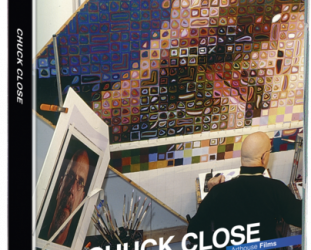
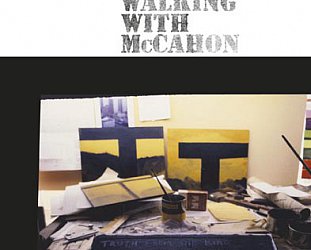
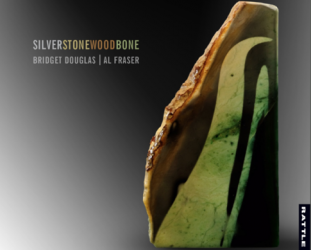

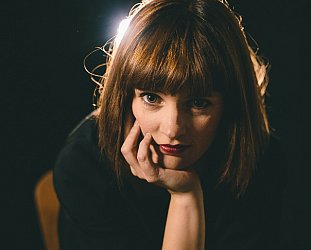
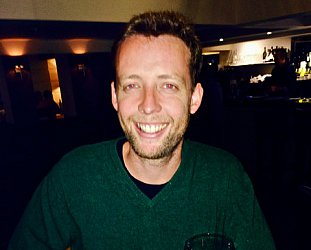
post a comment